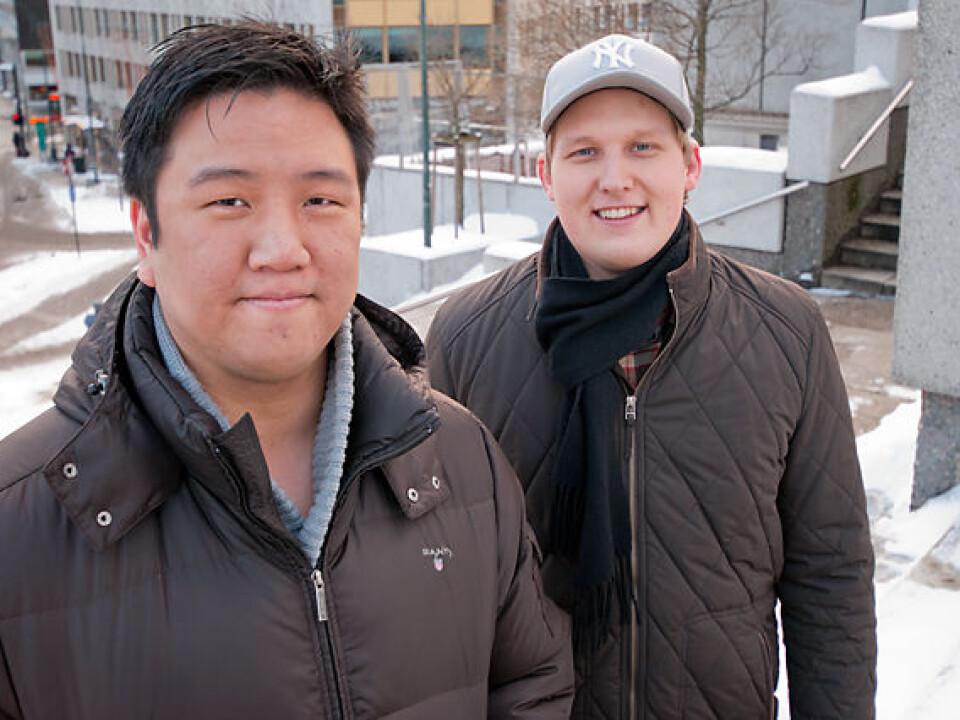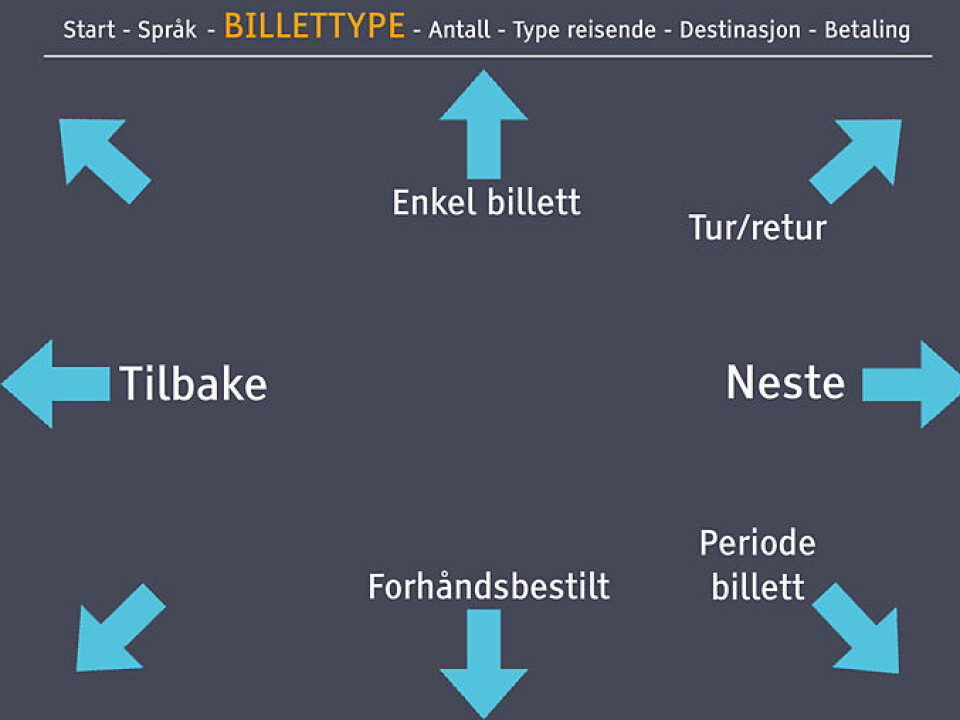This article was produced and financed by Oslo Metropolitan University

Blind-friendly vending machine
With audio feedback and simple gestures on a touch screen, ticket vending machines can now also be used by the blind and the visually impaired.
Denne artikkelen er over ti år gammel og kan inneholde utdatert informasjon.
Norwegian State Railways (NSB) has been getting a lot of criticism because their ticket vending machines are unsuitable for the visually impaired. The lack of physical buttons on the touch screen makes it impossible for blind people to navigate, which means they need help to use the vending machine.
This also applies to other vending machine solutions like the one the public transport authority uses.
Developed a prototype
Five of the University College’s former students have now developed a prototype that makes the ticket vending machines available for the strongly visually impaired and the blind.
NSB has declined to develop the concept and for the time being they have no plans for making their vending machines available to the blind.
“After using vending machines on the train stations for several years, NSB has not yet made any improvements for the blind,” explains Tek Beng Tan, a former student at the Bachelor’s Programme in Applied Computer Technology.

He indicates that other cities in Europe e.g. Barcelona, are ahead on this area.
Making selections with simple gestures
After frequent testing, the students found the best prototype and called it Swipe8. This prototype has a voice synthesis and is based on making simple gestures on the screen.
The concept uses gestures instead of pointing and touching and is based on the user’s single directional stroke on the screen.
Each of the directions represents a selection. What is unique with this solution is that it is insignificant where the gesture starts on the screen.

“This is a whole new way of thinking in connection with self-service vending machines. The solution we reached is both time-effective and user-friendly for all and it is easy to produce,” says Anders Johansen, who was responsible for the testing in the student project.
He hopes their technology may be a starting point for further development.
In April an article on their work, written by Professor and supervisor Frode Eika Sandnes, with the students as co- authors, will be published in the international journal Universal Access in the Information Society.
Working with solutions
NSB points out that they strive to make the best possible solutions for all and that a lot of work has been put into making the vending machines more user-friendly for the visually impaired.
The solution we reached is both time-effective and user-friendly for all and it is easy to produce.
Åge-Christoffer Lundeby, the head of communication in NSB, says that they have increased the contrast on the screens and removed disturbing elements to improve readability.
“Unfortunately, with touch screen technology you must to a certain extent be able to see in order to use the vending machines.”
-----------------------------------------------
Read this article in Norwegian at forskning.no






























